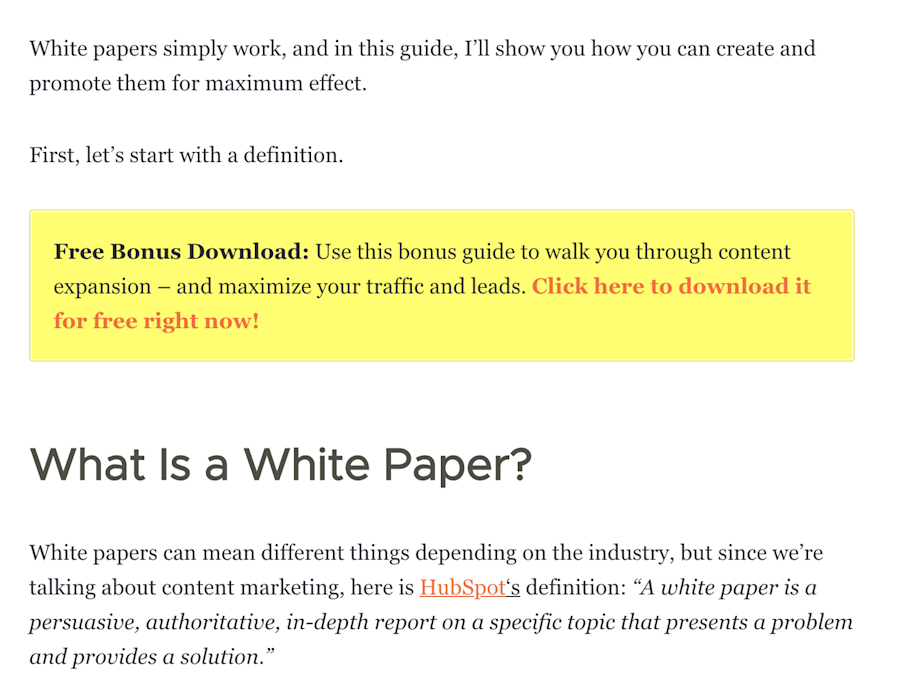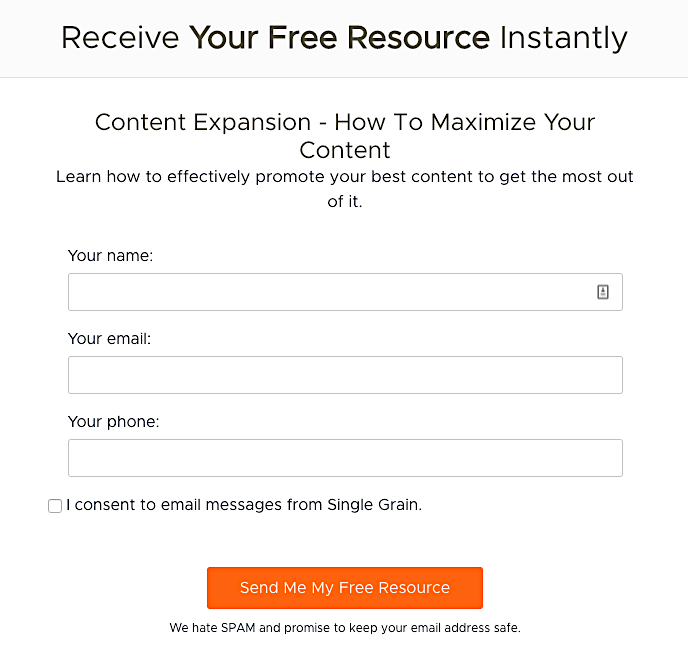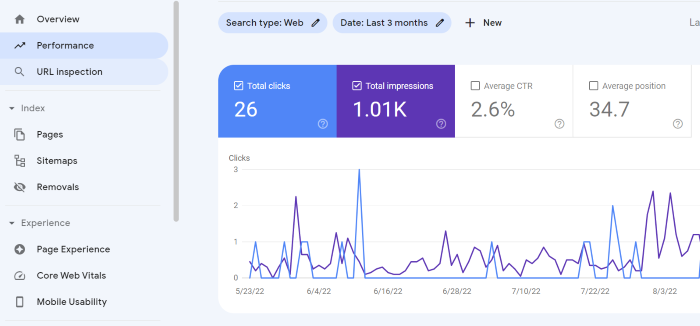There are certain things a business can’t get enough of: loyal customers, recurring revenue, extensive funding, and glowing press reviews, for starters.
There are certain things a business can’t get enough of: loyal customers, recurring revenue, extensive funding, and glowing press reviews, for starters.
While often ignored, another element behind any successful business is leads.
Before a company can grow, they need leads because leads are the foundation on which they build their revenue.
Leads are essential, so a company needs to work hard to acquire them.
As a digital marketing agency, we’ve found that content marketing is one of the most effective ways to attract lead generation leads.
Note: Ready to dive in and learn how to create a dialed-in content strategy to help you generate quality leads? Try Leadfeeder's 14-day trial to see what your prospects are interested in.
Before you create lead generation content, define your keywords
When you think about keywords, you probably think about keyword research, one of the first steps to starting an SEO campaign. But I want you to consider the keyword research process as part of something bigger . . .
The goal of keyword research is to find the queries people use in search engines. Behind every query, there’s a specific intent that someone had when they searched for it.
When you research keywords don't think of it as an SEO step, but as a market research activity. If you want to acquire leads, you need to get inside their minds. You have to provide them with the content they want and need – and keyword research is the process that will help you figure out what they care about.
By implementing in-depth keyword research, you’ll discover there are people who are interested in exactly what you’re creating and promoting. What’s more, you’ll see what other marketers in your industry have found.
You can separate keywords into three main groups, according to the step in which they belong in the marketing funnel:
Top of the Funnel (TOFU): High to mid-traffic informational keywords
Middle of the Funnel (MOFU): Long-tail informational keywords
Bottom of the Funnel (BOFU): Mid to low-traffic (i.e., long-tail)
Start with the TOFU keywords, which you will use to attract traffic to your company’s main pages, like the homepage and blog. Then continue with the MOFU keywords, which you’ll use in your blog posts. You can also use these keywords for your lead generation content, as they can help you discover what problems people have and the solutions they are looking for.
Finally, the BOFU keywords are the ones you can use for your landing pages and other promotional pages.
There are a large number of keyword research tools, two of the most popular: Ahrefs and Semrush. You can also use a free tool like KeywordTool.io to find keyword suggestions and Moz to identify long-tail phrases as well as to complement the results of Ahrefs and Semrush.
When you use these tools, you need to be aware there are no “right or wrong” keywords that you need to uncover. Rather, look for the keywords that best suit your company—and your prospective leads.
Create gated content to capture leads online
Once you find what people want, you need to create content that gives your leads precisely what they are looking for. Since you have keywords categorized by the steps of the funnel to which they belong, you can structure your content generation in the following way:
Top of the funnel content: Articles, infographics, videos, and podcasts
Middle of the funnel content: Ebooks, white papers, reports, checklists, cheat sheets, and free email guides
Bottom of the funnel content: Webinars, product demos and trials, and sales materials
Given that our goal in this post is how to generate leads online through your content strategy, we’ll focus on the middle of the funnel (which is where the content lives that you'll use to generate leads).
"Gated content" is content that readers can’t access without giving a piece of personal information (usually an email address) in return for the content piece. The goal of gated content is to capture prospects in the middle of the conversion funnel.
One company that does lead generation remarkably well is Marketo. They offer many types of gated content pieces, and all of them ask for quite a lot of information from their visitors, as you can see below:

The key to gated content is creating assets your leads want to read and are willing to share their information to get.
5 Strategies to Uncover Lead-Generating Content Ideas
The keywords you uncovered are just the first step in content creation. Next, you'll need to uncover ideas your leads will care about to create gated content like ebooks, how-to guides, and case studies.
1. Use Google Analytics to find topics your leads care about + create downloadable assets
Go to your Google Analytics. In the left menu, click on Behavior > Site Content > All Pages.

By default, Google will organize your pages according to the number of page views each received in the past 30 days. Segment this report based on your blog posts. If your site has a “/blog” folder, you can do it by showing URLs that belong to that same folder.
In the top part of the report, click on “Advanced”:

Then, add “blog” to the “Page” dimension, and apply the filter:

Now you can see the blog posts with the most page views. Think about this for a second: if people consume these types of content often, it’s because it must be really helpful.
You can then create more content about similar topics or (our favorite strategy), make popular posts downloadable.
Once you know which posts are most popular, make them downloadable and ask for the visitor’s email. To make the downloads even more enticing, expand on the value of the article by adding additional content, including charts, templates, or tool lists.
You can also ask for more information like you saw Marketo doing above. Just remember though, the more information you ask, the more friction there is for the conversion and the lower it may be as a consequence.
Note: Similar data is available in GA4 by clicking "Reports > Engagement > Overview", then scrolling down to "Views by Page Title and Screen Class."
However, higher friction may also result in higher quality leads, so there is a balance.
We like offering downloadable pieces in every article:

Once you click on that link, you’ll get a form where you fill out your name, email, and phone number (remember, due to GDPR regulations, data collection and storage requirements are different – hence the consent checkbox in the image below).

Using this lead magnet (or “content upgrade,” as some B2B marketers call it) has allowed us to drive more leads, many of whom ended up becoming customers of ours.
P.S. - If you’re using Leadfeeder and you gate your content, you’ll be able to find out which companies wanted your content but didn’t fill out the form. With Leadfeeder, you can see the companies that visited that page.
Here’s more info on the topic of unfilled form-fills. That was a tongue twister.
2. Use LinkedIn to find topics your leads are talking about
When it comes to developing a lead-driven content marketing strategy, LinkedIn is a powerful resource. People go on social media to discuss topics they are interested in, curious about, or just want to share with like-minded people.
On LinkedIn, most of those topics are business-related. There are several ways to source topic ideas from LinkedIn.
First, you can simply scroll through your feed. Do you notice any topics popping up more regularly? Are the same topics coming up in thought leadership posts?
For example, tech layoffs have been a hot topic, so you might write about that —if it's a topic prospective leads might care about.
You can also use LinkedIn's search features to find leads in your ideal target audience and see what topics they're talking about. Using filters, you can zero in on companies in a specific industry, location, and level of growth.

What topics are these brands posting about? Are they sharing new features, new trends, or interesting takes—ideally related to the keywords you uncovered? If so, create high-quality pieces of content that are interactive, exciting, and worth handing over their contact information for.
Finally, dive into LinkedIn groups. There are thousands of groups on hundreds of different topics; which means your buyer personas are likely in a few different groups.
Look for groups that are large, but pay close attention to how active it is. If there's a handful of people just promoting themselves, it's probably not worth the effort.
If the community has thousands of people and active conversations, keep an eye out for top posts.
What topics are getting the most engagement? What problems are group members complaining about? Use that information to create content your leads will care about.
3. Use Semrush’s Keyword Magic Tool
Wish content ideation was magic? Semrush's Keyword Magic Tool is about as close as you can get.
It's a powerful tool that provides deep insights into the topics most important to your target audience.
Start by searching your core keyword—let's say that's "CRM." The tool generates a complete list of keywords related to that topic, including broad match, phrase match, exact match, and related keywords.

In addition to sharing keywords for topic ideation, the Magic Keyword Tool also shares search intent. Intent refers to the reason why a searcher is looking up a specific term.
For example, if I search "Leadfeeder contact" that's a navigational search—I'm hoping Google will show me their contact page.
If I search "how to drive more leads with content marketing," that is an informational search—it means I'm looking for information about the topic.
Paying attention to the intent of search (and focusing on keywords with informational or commercial intent) will help your content connect with well-qualified leads.
4. Use Ahrefs’ Keywords Explorer
Similar to Semrush's tool, Ahref's Keyword Explorer provides detailed insights about keywords, including search volume, global volume, and cost per click.
The tool also provides keyword ideas, keyword difficulty scores, and a click metric that shows the estimated number of clicks for each keyword (metric other tools don't provide!)
Start by searching core topics important to prospective leads, then use the keyword idea list to find related topics.

The "Parent Topic" section is also worth a look. It highlights more general topics your audience may be interested in.
5. Look at "People Also Ask" questions related to core keywords
Perform a search in Google, and you're likely to see a box called "People also ask." These are related questions users often search after looking up the current search query.
For example, if you search "what is a CRM manager," Google displays related queries. To see the answers, just click on the drop-down menu:

These questions can serve as a source of inspiration for downloadable assets, new blog posts, webinars, or any other type of content you use to gather leads.
Increase leads by using landing pages to attract more content
Once you know what content your visitors want and develop it, you need to promote it. While you can offer this fantastic content in your articles, there’s a more scalable and effective way to scale your content marketing campaigns – by using landing pages.
Landing pages are effective because they can be used to attract both organic and paid traffic. Instead of waiting for your visitors to find the offer at the end of your articles (if they even finish your articles), landing pages allow you to focus all your visitors’ attention on your amazing offer.
Developing landing pages is an art form on its own. If you want to have a landing page that converts, however, you only need to focus on getting three elements right:
The headline
The copy
The offer
Every effective landing page begins with a compelling headline that showcases the benefit of downloading the gated content. Effective landing page headlines should be precise and clear. In most cases, companies choose to use the name of the content piece as the landing page title.
Unbounce does a terrific job with the headline of their e-book. What’s so special about it is that the name of the e-book itself is compelling and then the subtitle below helps reinforce the idea of the e-book.

When writing the copy, focus on developing a strong hook. Think about it this way: when you write the copy for your landing page, ask yourself “why would the visitor care about this?”
If you can’t answer that question clearly, your hook isn’t good enough.
Make the offer a no-brainer for the visitor. Talk about the problem in the language that they use to talk about it.
You can mention a juicy statistic that proves your point or share a case study of one of your customers and how your solution helped them. The rule for the headline applies to the body copy, too: make it as straightforward and compelling as possible.
Finally, you need to have a great offer, which by now should be tailored to the visitor. If you have followed the advice laid out here, you already know the best way to encourage users to opt in.
Measuring lead generation content strategy performance
How do you know you've created great content? Hopefully when qualified leads start pouring in. The truth is, it can be challenging to tell if content-related lead generation strategies are effective.
This is why tracking your content strategy performance is crucial. Luckily, there are plenty of tools to help.
Google Analytics
Google Analytics is the simplest way to see if your content is attracting potential customers—or flopping.
Note: The old Google Analytics is now called Universal Analytics and will sunset in early 2023. This step-by-step guide uses GA4. Don't worry it's not complicated to use!
Login to Google Analytics, then click "Reports" on the left sidebar.
Select Engagement (located under Life Cycle), then pages and screens.
Scroll down to see a list of pages. You'll also see the views per page.

This shows how much traffic a specific page gets. If your landing page traffic or blog post traffic is high, but conversions are low, you may need to make adjustments to your offer or CTA.
Pro tip: Create a Leadfeeder filter to track B2B leads that land on your forms but don't fill them out so you can follow up!
Google Search Console
Tracking overall traffic tells you how many people visited your page, but not if they are in your target audience or if they've done more than view the page for a few seconds.
For more detailed info, you'll want to head over to Google Search Console. Once you've logged in, select "Performance" in the left sidebar.

Here, GSC will display total clicks, total impressions, average CTR, and even average rank for your overall website. (Impressions are how often someone sees your link in Google, while total clicks refer to how often users click on your links.)
If users are seeing links often (meaning you have high impressions) but your CTR is low, consider adjusting your offer. People are seeing your content, but they aren't clicking—you need to figure out why!
Semrush to track keywords visibility
Keyword visibility refers to how often your website is found online for specific keywords. Semrush's "Visibility %" metric estimates visibility for keywords you track in the platform.
To view this data, log in to Semrush, then click "Position Tracking" in the left sidebar. Semrush will ask you what keywords you want to track. In this case, you'll want to add the keywords to your lead-generating content targets.
Once you've added them, the platform will show you how your site ranks for those keywords.

Scroll down to see top keywords and your visibility for those keywords (meaning how often your site shows up for searches of that keyword.)
This will tell you how well your valuable content is performing in the search results. If they aren't performing well, remember you can use other methods to promote your content, such as paid ads or email marketing.
Conclusion
Generating new leads for your business is crucial to long-term business growth. To generate leads consistently, you need a content marketing strategy that will act as the spearhead of your lead gen efforts.
Remember: start by researching your audience. Once you uncover the fundamental problems and solutions leads are looking for, create gated content to gather their contact information. Finally, create well-optimized landing pages with action-focused CTAs.
By following the steps in this article, you'll generate high-quality leads your business needs for months and years to come.
Note: Ready to dive in and learn how to create a dialed-in content strategy to help you generate quality leads? Try Leadfeeder's 14-day trial to see what your prospects are interested in.
More leads, no forms.
Sounds too good to be true? It’s not. Identify companies already visiting your website and turn them into qualified leads to fuel your sales pipeline.
Show me how







